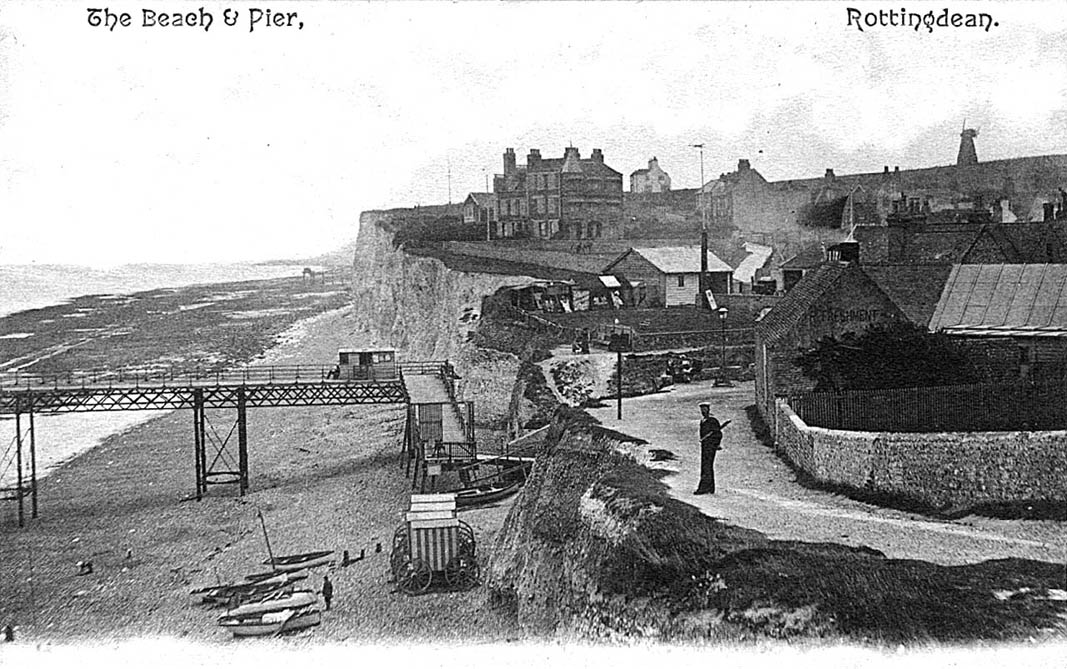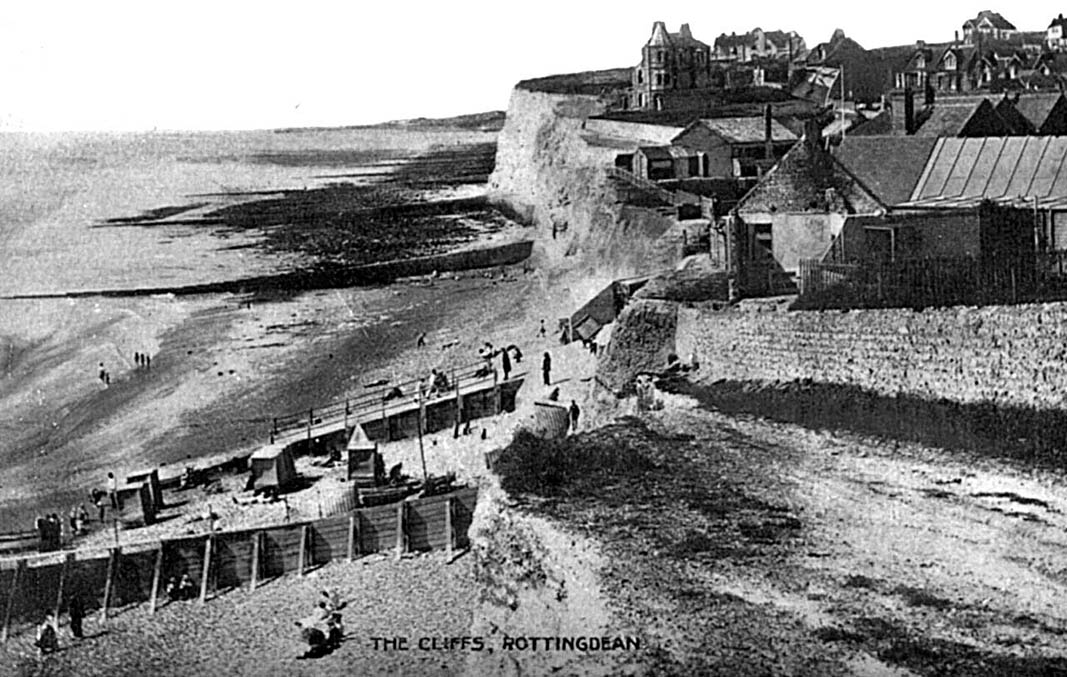 |
This photograph was taken in about 1900, when Rottingdean boasted a pier, which served a sea-going tram named "Pioneer", but more generally known as "Daddy Long-Legs". This tram was the invention of the Brighton engineer, Magnus Volks, and ran between Rottingdean and Kemp Town. The rails were mounted on concrete blocks set in the chalk shore platform, and the tram had stilt legs (with wheels at the base) so that it could operate not only at low tide but also at high tide. The tram made its maiden journey in November 1896 but soon after was badly damaged in the storm that wrecked Brighton's Chain Pier. After extensive repairs it was brought back into service, but in 1901 the line had to close when Brighton Corporation decided to extend the Kemp Town groynes further out to sea across the track bed.
The tram can be seen at Ovingdean pier in the far distance. Also discernable is the track bed leading to Rottingdean. Note the three-story house on the far side of the Gap. In this picture it is still some distance from the cliff edge.
|

